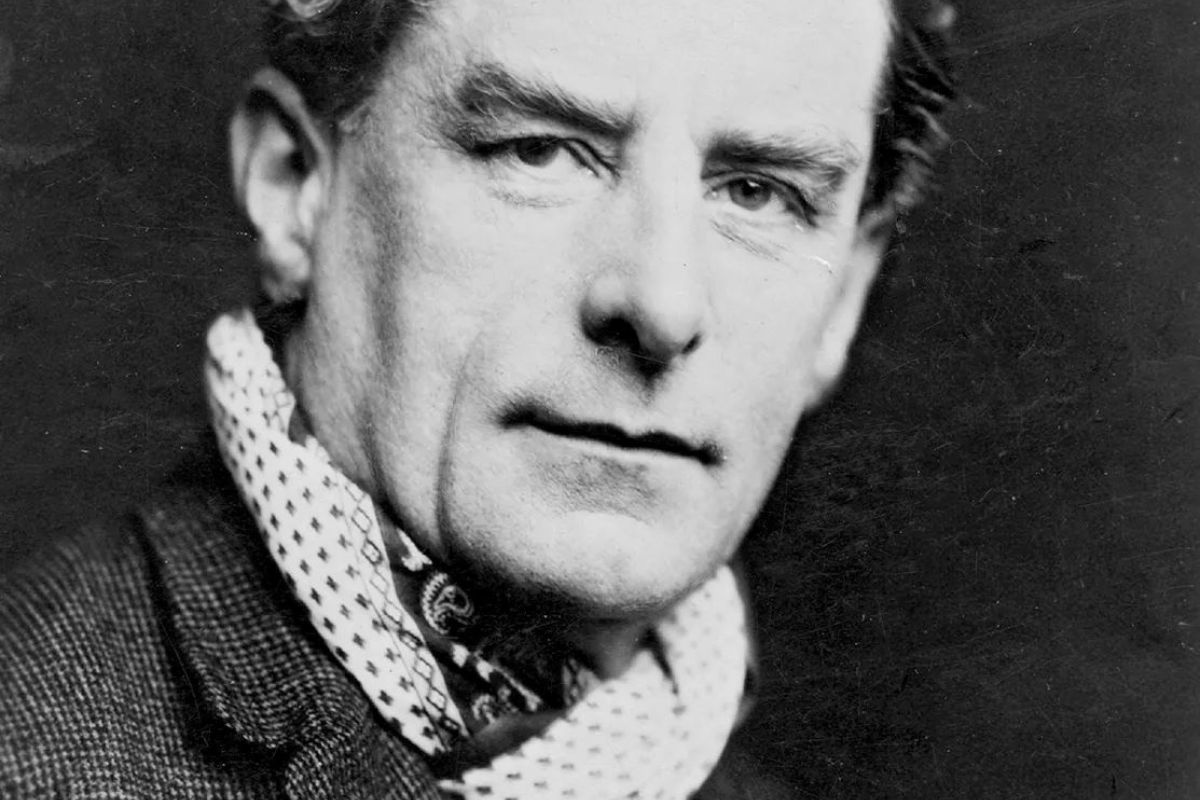
Who was Walter Sickert? Walter Sickert was a British painter known for his vivid and sometimes controversial works. Born in 1860, he became a key figure in the transition from Impressionism to Modernism. Sickert's art often depicted everyday scenes, capturing the gritty essence of urban life. He was also a member of the Camden Town Group, a collective of artists focused on realistic portrayals of London. Some even speculate that he had a darker side, with theories suggesting he might have been Jack the Ripper. But was he really? Let's dive into 35 intriguing facts about this enigmatic artist.
Key Takeaways:
- Walter Sickert, a renowned artist, led a fascinating life filled with artistic innovation, controversial theories, and a deep impact on British art, inspiring generations of artists worldwide.
- Despite speculation about his involvement in the Jack the Ripper case, Sickert's legacy as a mentor, innovator, and eccentric personality continues to captivate art enthusiasts and historians globally.
Early Life and Background
Walter Sickert, a prominent figure in the art world, had a fascinating life filled with intriguing details. Let's dive into some lesser-known facts about him.
- Born in Munich, Germany, on May 31, 1860, Sickert moved to England with his family at the age of eight.
- His father, Oswald Sickert, was a Danish-German artist and engraver, which influenced Walter's artistic inclinations.
- Sickert initially pursued a career in acting before turning to painting, studying under the famous artist James Abbott McNeill Whistler.
- He was fluent in multiple languages, including English, German, and French, which helped him navigate the European art scene.
Artistic Career
Sickert's career as an artist was marked by innovation and controversy. Here are some key points about his work and influence.
- He became a prominent member of the Camden Town Group, a collective of British Post-Impressionist artists.
- Sickert was known for his depictions of urban scenes and everyday life, often focusing on the gritty aspects of city living.
- He was heavily influenced by the works of Edgar Degas, adopting similar techniques and themes in his own paintings.
- Sickert's use of dark, muted colors and dramatic lighting set his work apart from his contemporaries.
- He often painted scenes of music halls, capturing the vibrant nightlife of London.
- Sickert's work was not always well-received; some critics found his subject matter and style too unconventional.
Personal Life
Walter Sickert's personal life was as colorful as his art. Here are some intriguing facts about his relationships and lifestyle.
- He married twice, first to Ellen Cobden in 1885 and later to Christine Angus in 1911.
- Sickert had a close friendship with fellow artist Aubrey Beardsley, who shared his interest in the macabre.
- He was known for his bohemian lifestyle, often frequenting the same music halls and theaters he painted.
- Sickert was a prolific letter writer, corresponding with many notable figures of his time, including writer George Bernard Shaw.
- He had a fascination with crime and the darker side of human nature, which influenced both his art and personal interests.
Controversies and Theories
Sickert's life and work have been the subject of much speculation and controversy. Here are some of the most notable theories and debates surrounding him.
- Some believe that Sickert was Jack the Ripper, a theory popularized by crime novelist Patricia Cornwell.
- He was known to have an interest in the Jack the Ripper case, even painting scenes inspired by the murders.
- Sickert's painting "The Camden Town Murder" was based on a real-life crime, further fueling speculation about his fascination with violence.
- Despite the theories, there is no concrete evidence linking Sickert to the Jack the Ripper murders.
- His unconventional techniques and subject matter often led to heated debates among art critics and historians.
Legacy and Influence
Walter Sickert's impact on the art world continues to be felt today. Here are some facts about his enduring legacy.
- He is considered one of the most important figures in British art, influencing generations of artists.
- Sickert's work is featured in major museums and galleries around the world, including the Tate Britain and the Metropolitan Museum of Art.
- He was a mentor to many young artists, including the famous painter David Bomberg.
- Sickert's innovative use of color and composition has been studied extensively by art historians.
- His work has been the subject of numerous exhibitions, books, and documentaries.
Later Years and Death
The final years of Sickert's life were marked by continued creativity and reflection. Here are some facts about his later years and death.
- Sickert continued to paint and exhibit his work well into his seventies.
- He moved to Bath, England, in 1934, where he spent his final years.
- Sickert's health declined in his later years, but he remained active in the art community.
- He died on January 22, 1942, at the age of 81.
- Sickert was buried in the churchyard of St. Nicholas Church in Bathampton, England.
Interesting Tidbits
Beyond his art and controversies, there are many quirky and lesser-known facts about Walter Sickert.
- He was an avid cyclist and often rode his bicycle around London to find inspiration for his paintings.
- Sickert had a keen interest in theater and often incorporated theatrical elements into his work.
- He was known for his eccentric personality, often wearing flamboyant clothing and adopting unusual habits.
- Sickert's studio was a chaotic space filled with props, costumes, and unfinished works.
- Despite his fame, Sickert remained humble and dedicated to his craft, always striving to push the boundaries of his art.
Walter Sickert's Legacy
Walter Sickert's life and work continue to fascinate. His unique approach to art, blending everyday scenes with a touch of mystery, set him apart. Sickert's influence on modern art is undeniable, inspiring countless artists with his bold techniques and subject matter. His connection to the Jack the Ripper case adds an intriguing layer to his story, though it's still debated.
Sickert's paintings, often dark and moody, reflect his complex personality and the turbulent times he lived in. His ability to capture the essence of urban life and human emotion remains unmatched. Whether viewed as a brilliant artist or a controversial figure, Sickert's impact on the art world is lasting. His legacy lives on through his captivating works, which continue to be studied and admired by art enthusiasts and historians alike.
Frequently Asked Questions
Was this page helpful?
Our commitment to delivering trustworthy and engaging content is at the heart of what we do. Each fact on our site is contributed by real users like you, bringing a wealth of diverse insights and information. To ensure the highest standards of accuracy and reliability, our dedicated editors meticulously review each submission. This process guarantees that the facts we share are not only fascinating but also credible. Trust in our commitment to quality and authenticity as you explore and learn with us.


